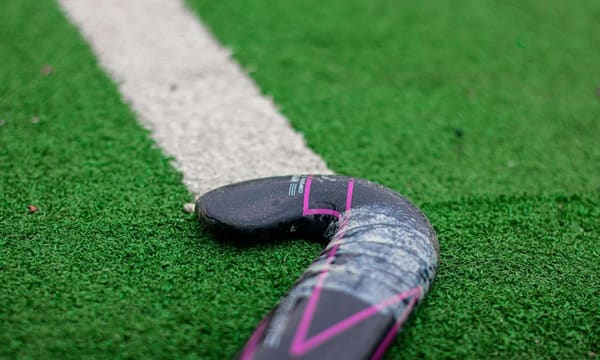Top-quality artificial turf has become the standard for hockey fields, providing players with a fast, predictable pitch that withstands intense matches and changing weather conditions. While looking after the surface of a hockey field still requires some regular maintenance, the work involved is considerably less than what’s needed for natural grass.
Let’s look at the major benefits of using synthetic turf for hockey fields and how to keep the pitch in top shape regardless of the season.

Key Benefits of Artificial Turf for Players, Coaches, and Facility Managers
Artificial turf provides practical advantages for everyone involved in the game, from smoother play for athletes to easier upkeep for grounds staff.
- Perfectly even surface: No dips, holes or muddy spots to slow the ball or trip up players.
- Faster ball roll: Consistent speed helps players develop quick reactions and sharp passes.
- Better player safety: Fewer slips and reduced risk of injuries from uneven ground.
- Durable and cost-effective: Less damage from weather and heavy use, saving money on constant repairs.
- All-weather playability: With no muddy, slippery pitch—there’s no need to cancel matches because rain has stopped play!
Maintenance Tasks to Keep Your Hockey Field in Top Form
Maintaining an artificial hockey field doesn’t have to be time-consuming, but regular upkeep ensures it performs at its best and extends its lifespan.
Clear away loose debris: Twigs, leaves, and debris can accumulate quickly, especially if the field is located near trees or shrubs. A simple sweep or pass with a leaf blower a few times a week prevents debris from blocking drains or affecting the ball’s movement.
Water dress before the game: Many clubs choose to lightly water their synthetic field before both matches and training sessions to achieve the best performance from the turf. This simple step reduces friction, allowing the ball to glide faster and providing players with a smoother, more predictable game. A damp field also helps prevent friction burns when players slide and can lower the surface temperature on hot days, creating a more comfortable environment for everyone on the pitch.
Deep clean and sanitise: Over time, dirt, sweat and bacteria build up, especially in high-use zones like goal mouths and near the benches. Regular deep cleaning lifts embedded dirt and helps the turf fibres stand upright, whilst sanitising keeps the surface hygienic, reduces odours and supports players’ health.
Check and maintain turf infill (GMAX hardness)
The infill material inside the turf affects how soft or firm the field feels underfoot. This is measured by the GMAX rating—if the infill settles too much or shifts unevenly, the field can become too hard, increasing the risk of injury. Check infill levels regularly and top up as needed to maintain safe shock absorption.
Refresh faded line markings: Line markings can fade over time due to constant play and harsh weather conditions. Repainting lines keeps the field looking professional and ensures hockey players and referees can clearly see all the boundaries and scoring areas. Always use paint designed for synthetic turf to avoid damage.
Routine Care Makes All the Difference
A high-performing hockey field doesn’t look after itself, but it doesn’t demand an endless amount of work. Regular sweeping, light watering, deep cleaning, infill checks and fresh line markings are all that’s needed to keep the turf fast, safe and game-ready, season after season. With a little consistent care, players can focus on their skills and strategy, knowing the field will always support their best game.